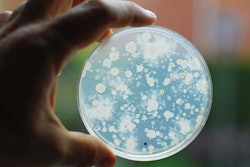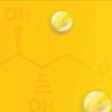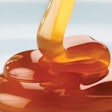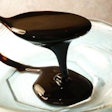
Apple cider vinegar is making its way into pet foods and treats. It has been a home remedy for decades, if not centuries, for all sorts of personal maladies, but that has primarily been for people. Not too surprisingly, these benefits are being conferred to pets. Some claims may have validity and others may be misdirected. What do we know about apple cider vinegar in pet food applications?
What do we know? Not a whole lot
As one might guess, there are no direct studies reported in the peer-reviewed scientific literature regarding apple cider vinegar for application to dog or cat diets. Most of the information on blogs and pet health websites are anecdotal at best. Conversely, there are many works published involving humans, rats and poultry. Apple cider vinegar has been reported to help control obesity, aid triglyceride and cholesterol metabolism, and help manage diabetes and post-prandial glucose levels. There are reports that it may have cardiovascular effects, impact blood pressure, reduce tumor development, possess anti-inflammatory effects and possibly reduce stress. It most certainly has antimicrobial effects and has been used as such for centuries to stabilize foods in various forms of pickling. That’s a lot of roles for a single ingredient.
Whether these effects translate to the dog or cat themselves or as a preservative for their food is not well documented. Numerous websites list the virtues of vinegar for pets; they typically include things ranging from supplementation, to dermal remedies, to removing unwanted odors. Some even claim that apple cider vinegar will prevent urine spots in the lawn. Claims range from a benefit to digestion, improved nutrient absorption, reduced gastric distress and improved colonic health. While evidence is lacking, there is clearly a great deal of conviction about its benefits. A more thorough understanding of what this ingredient is and can do would be helpful.
What is apple cider vinegar?
At the ingredient level, apple cider vinegar is produced by fermenting apple juice. In the commercial process, apples are brought into the facility and crushed, and juice is pressed from the pomace. The first fermentation converts the sugars to alcohol (ethanol) under aerobic conditions, then this is fermented with acetobacter spp. that yields acetic acid. Apple cider vinegar is typically cloudy as some of the microbial culture, “the mother” as it is often described, remains in the product. This is then distilled and pasteurized. Much like other household vinegars, the active element in apple cider vinegar is acetic acid and usually at a concentration of 3% to 5%.
This acetic acid is a two-carbon short-chain fatty acid and is a normal part of animal metabolism. It is also one of the short-chain fatty acids produced by fermentation in the colon. This is not something new and unknown. Acetic acid has been evaluated regarding its impact on canine and feline metabolism for more than 80 years for its ketogenic activity.
In addition to the acetic acid, apple cider vinegar is reputed to contain appreciable quantities of potassium, but the level (0.073%, according to the U.S. Department of Agriculture’s Nutrient Database) is merely reflective of the apples from which it was derived. Thus, it’s not a major source of the mineral. More importantly, apple cider vinegar retains meaningful quantities of bioactive compounds mostly derived from the apple skins and their fermentation. These include peptides, amino acids, minerals, vitamins and polyphenolic acids (such as catechins, ferulic acid, caffeic acid and gallic acid). Along with the acetic acid, these compounds are likely what provides value to apple cider vinegar for animal health.
Pet food possibilities for apple cider vinegar
In pet food there are two options to add apple cider vinegar: as a liquid or a dry powder. The latter is usually “dried” by plating the vinegar onto a dry carrier such as maltodextrins. The liquid can be added in a quantity that the process (extrusion or baking) will allow for total liquids, keeping in mind that the baking or drying (following extrusion) may lead to a significant vaporization of the acetic acid (a volatile fatty acid) that will vent off with the exhaust air.
Application rates are dependent upon intent. In a study from the Netherlands by Naoum et al. (2002) it was reported that acetic acid (Glacial acetic acid; 99.8% purity) supplementation to dogs led to an issue with palatability at levels up to 5% of the metabolizable energy of the diet with minimal metabolic effect on the animals. To translate that to a dose of apple cider vinegar that is much more dilute (~5% acetic acid), it would push 100% of the diet. Thus, for practical reasons there would be no upper limit to animal acceptance based on acetic acid concentration alone, whereas a typical level of apple cider vinegar would be more in line with 1% to 5% in a food formula.
While Apple Cider Vinegar or Vinegar alone are not listed with the Association of American Feed Control Officials (AAFCO), acetic acid is generally recognized as safe (GRAS) (Part 582) under subpart B – General Purpose Food Additives as 582.1005 Acetic acid. For the European Union, acetic acid’s registration number is E260 and is listed as a feed additive preservative for use in all animal species without restrictions. They specify from a summary report that the maximum concentration is 2,500 mg/kg complete feed or 1,000 mg/L drinking water.
The most probable uses for apple cider vinegar, if evaluated properly, would be for its antimicrobial effect for food safety, for impact on glucose control in diabetic animals and for weight loss. It may also prove beneficial for urinary tract health. But with no research to base recommendations on, it remains relegated to the category of home remedy and folk medicine.
Briefly: top 5 takeaways
- Apple cider vinegar is beginning to show up in pet food and treats, but relevant research on the ingredient is scarce.
- Current claims range from a benefit to digestion, improved nutrient absorption, reduced gastric distress and improved colonic health.
- The active element in apple cider vinegar is acetic acid.
- The most probable uses for apple cider vinegar in pet food would be for its antimicrobial effect for food safety, for impact on glucose control in diabetic animals and for weight loss.
- Read more from Dr. Aldrich: www.PetfoodIndustry.com/authors/1



















